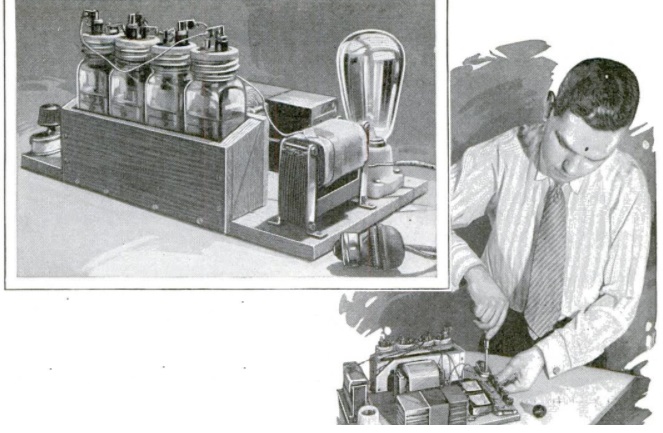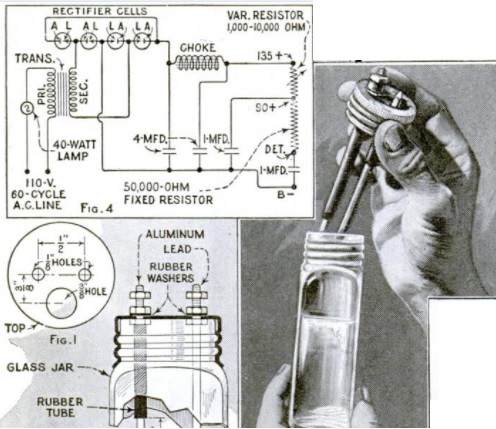 Tired of the bother and expense of having to buy batteries for his radio, the gentleman shown here is taking matters into his own hands by constructing a B-battery eliminator, following the plans in the March 1928 issue of Popular Mechanics. We showed a 1926 version earlier, and this one is more refined.
Tired of the bother and expense of having to buy batteries for his radio, the gentleman shown here is taking matters into his own hands by constructing a B-battery eliminator, following the plans in the March 1928 issue of Popular Mechanics. We showed a 1926 version earlier, and this one is more refined.
In this case, hum is dealt with by electrolytic capacitors, which were available for purchase. Rectifiers, on the other hand, weren’t as easy to come by. But undaunted, he just made his own, consisting of plates of lead and aluminum carefully suspended in pickle jars containing an electrolyte solution. That solution could be borax, sodium bicarbonate, or ammonium phosphate.
The rectifiers were just a bit tricky to get going, which explains the light bulb in series with the transformer primary. If the rectifiers were doing their job, the lamp would light briefly and then dim. If the light remained on, it meant that one of the cells needed attention. In either case, the light bulb served to limit the current and protect the expensive transformer.
Since modern rectifiers are so inexpensive, there’s little practical reason to make your own. However, they’re so simple to construct that a homemade rectifier would probably be the basis of an excellent science fair project for the advanced student.

